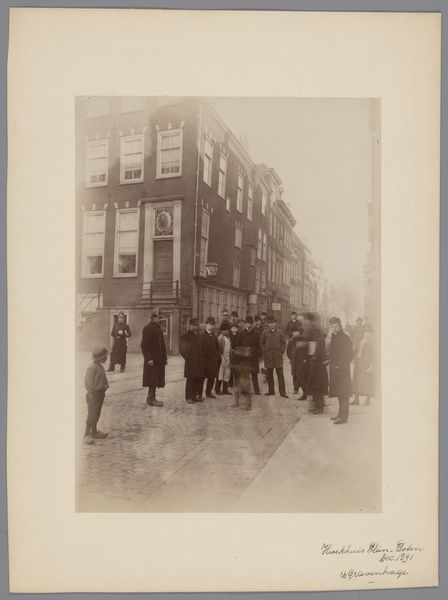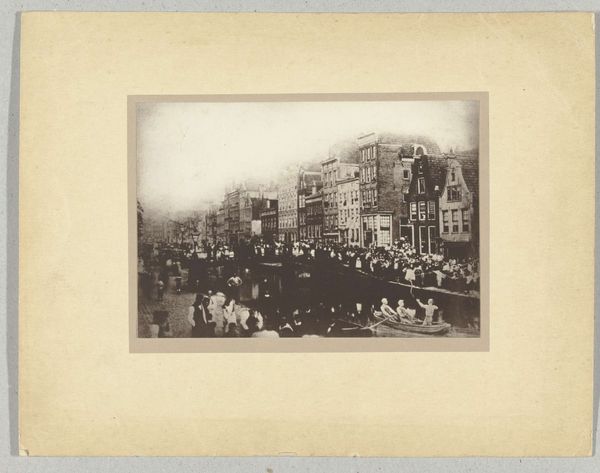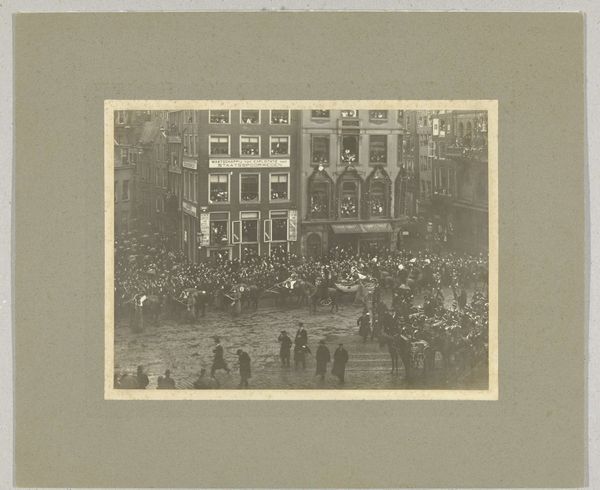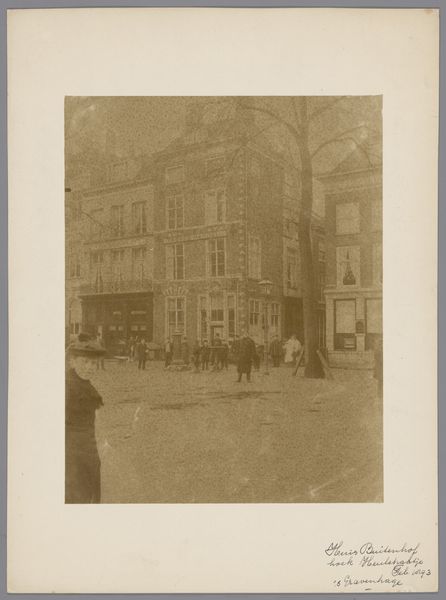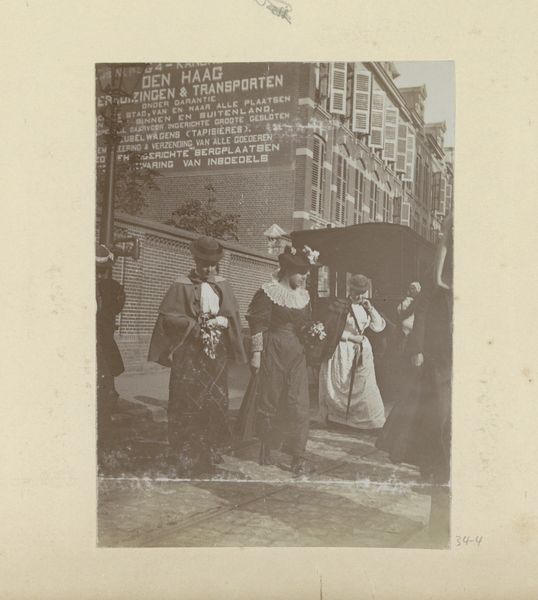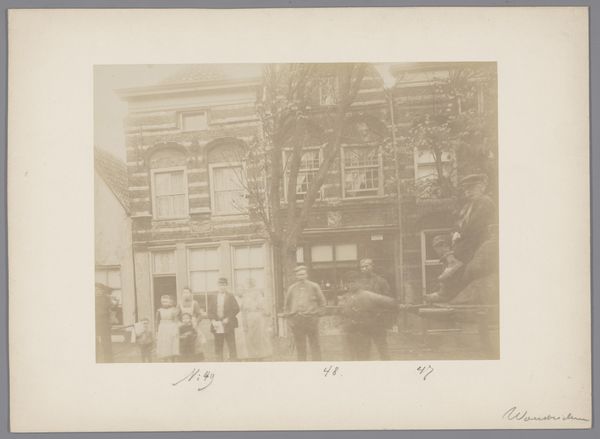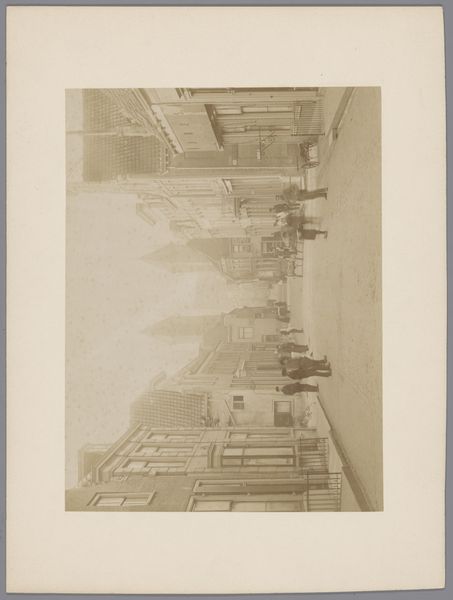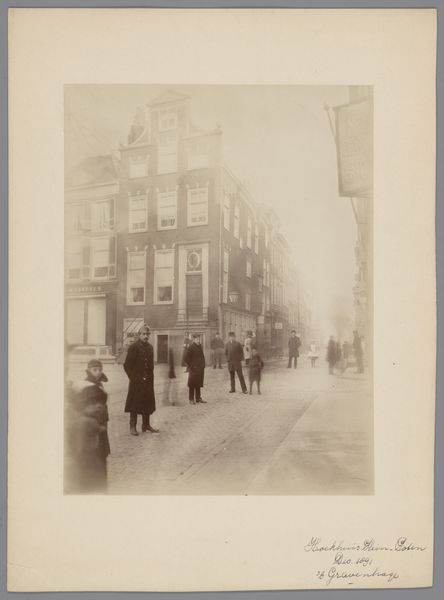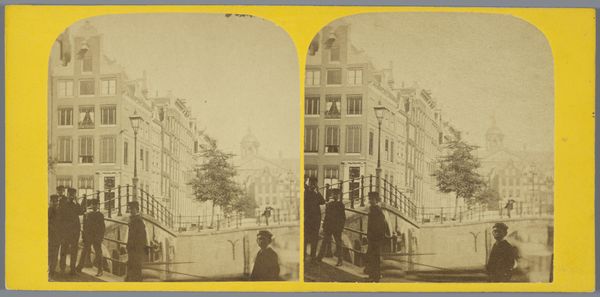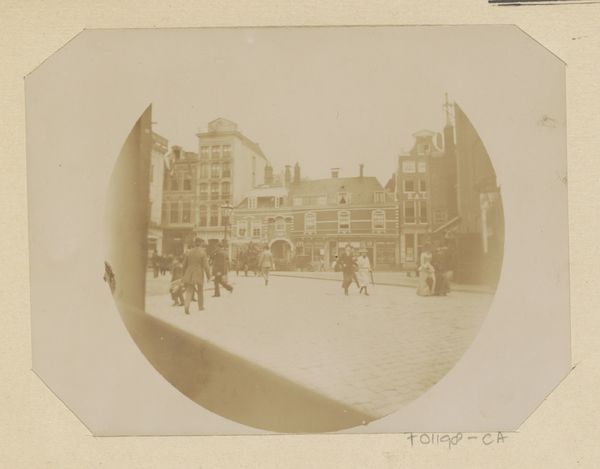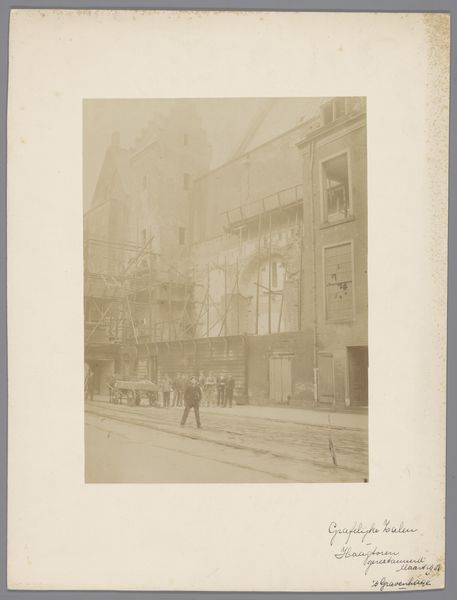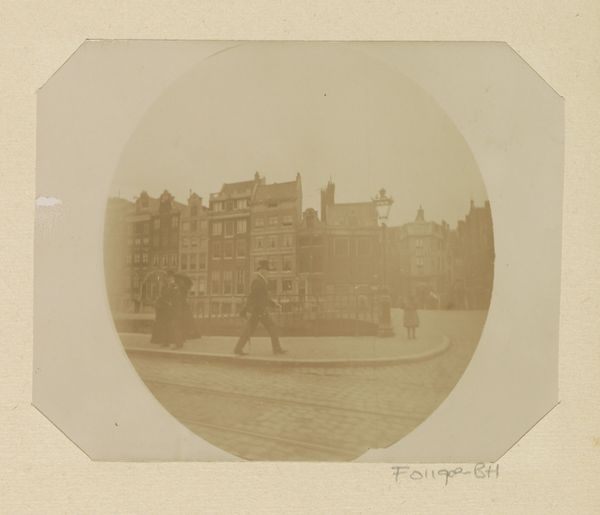
photography
#
16_19th-century
#
pictorialism
#
photography
#
cityscape
#
realism
Dimensions: height 90 mm, width 119 mm
Copyright: Rijks Museum: Open Domain
Johanna Margaretha Piek's photographs such as 'Shots in Amsterdam, Warnemünde, and Warnsborn' were made using photographic processes that were cutting-edge at the time, and now are historical. The sepia tones and soft focus are due to the chemical processes involved in early photography, where light-sensitive materials reacted to capture images on treated surfaces. Piek's choice of photography as a medium reflects an engagement with technological advancements, indicative of the shift towards mass production and consumption in the late 19th and early 20th centuries. The photograph captures a street scene, likely a public event. The composition, with its candid snapshot-like quality, suggests an interest in documenting everyday life. Photography democratized image-making, allowing for wider accessibility. Piek’s photographs remind us that the value of art lies not only in its aesthetic qualities but also in its historical and social context. The photograph becomes a valuable record of a specific moment in time, reflecting both artistic skill and broader cultural trends.
Comments
rijksmuseum about 2 years ago
⋮
The photograph of Herengracht was the key for identifying the album as belonging to the Pieks. It was taken from the house at number 258, where the family lived. We see the couple and their son with his classmates on an excursion to the Oostzee. The street photograph is an impression of German kaiser Wilhelm II’s visit to Amsterdam. The round, 9 centimetre photographs were taken with the improved Kodak No. 2.
Join the conversation
Join millions of artists and users on Artera today and experience the ultimate creative platform.
